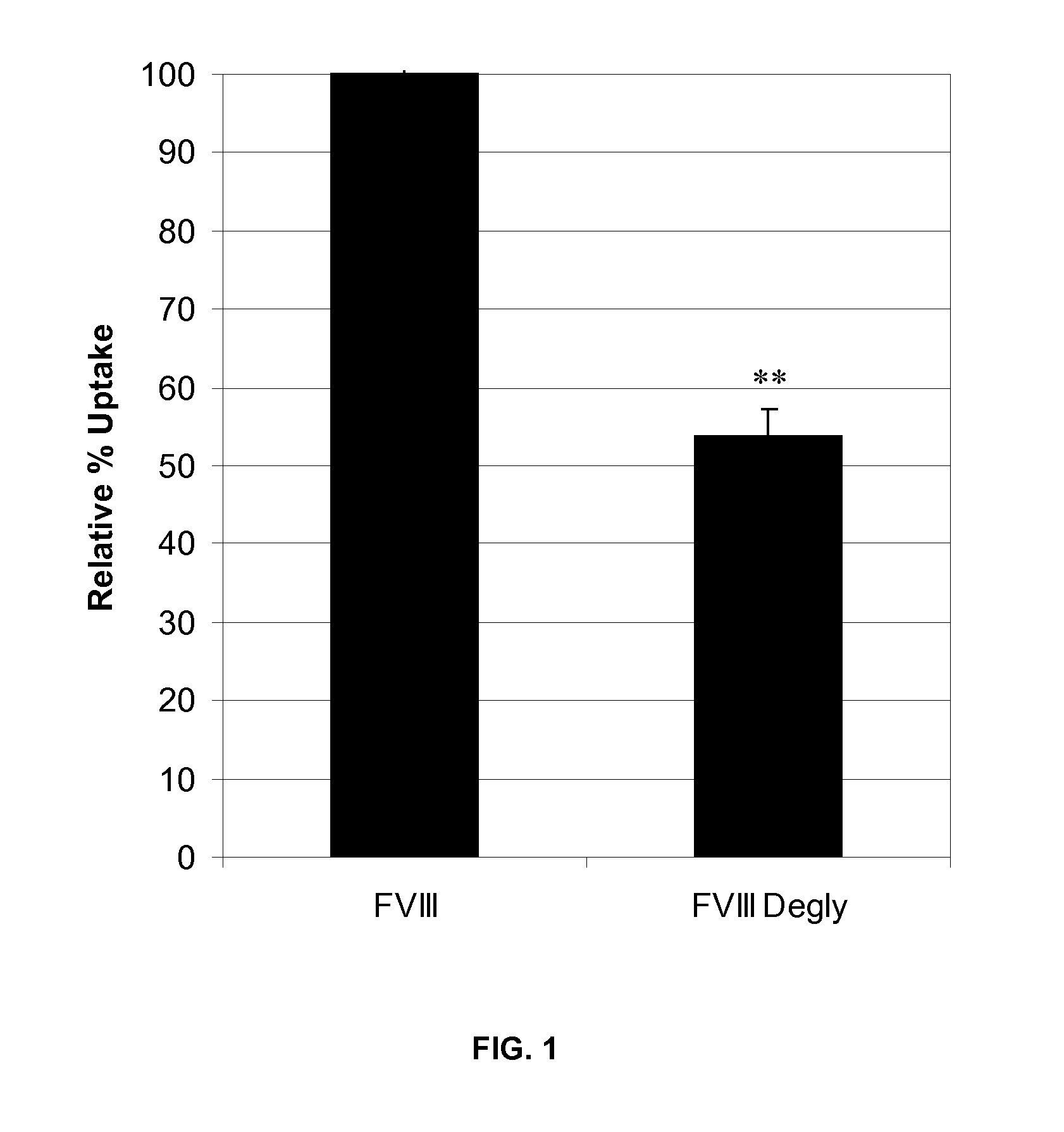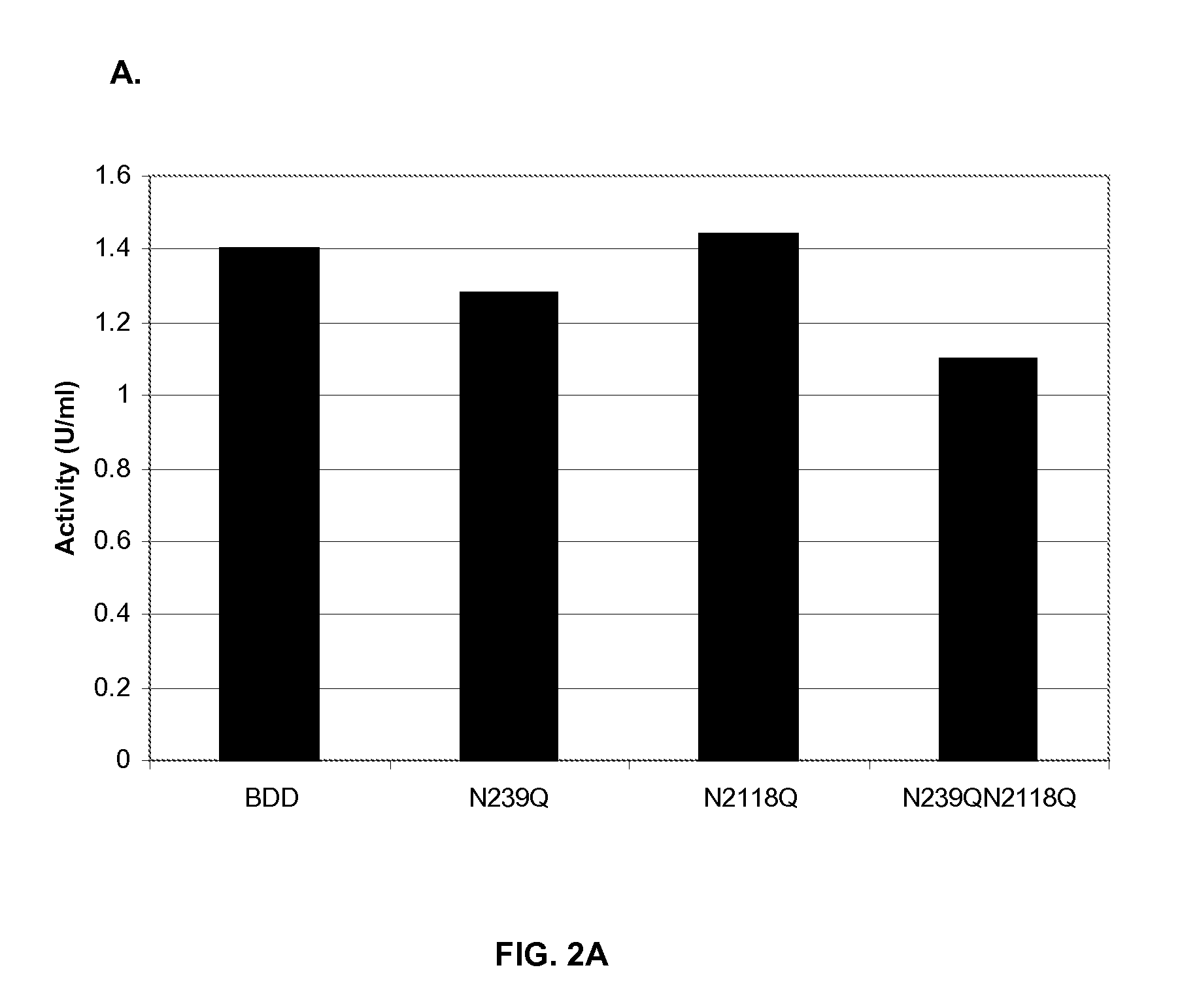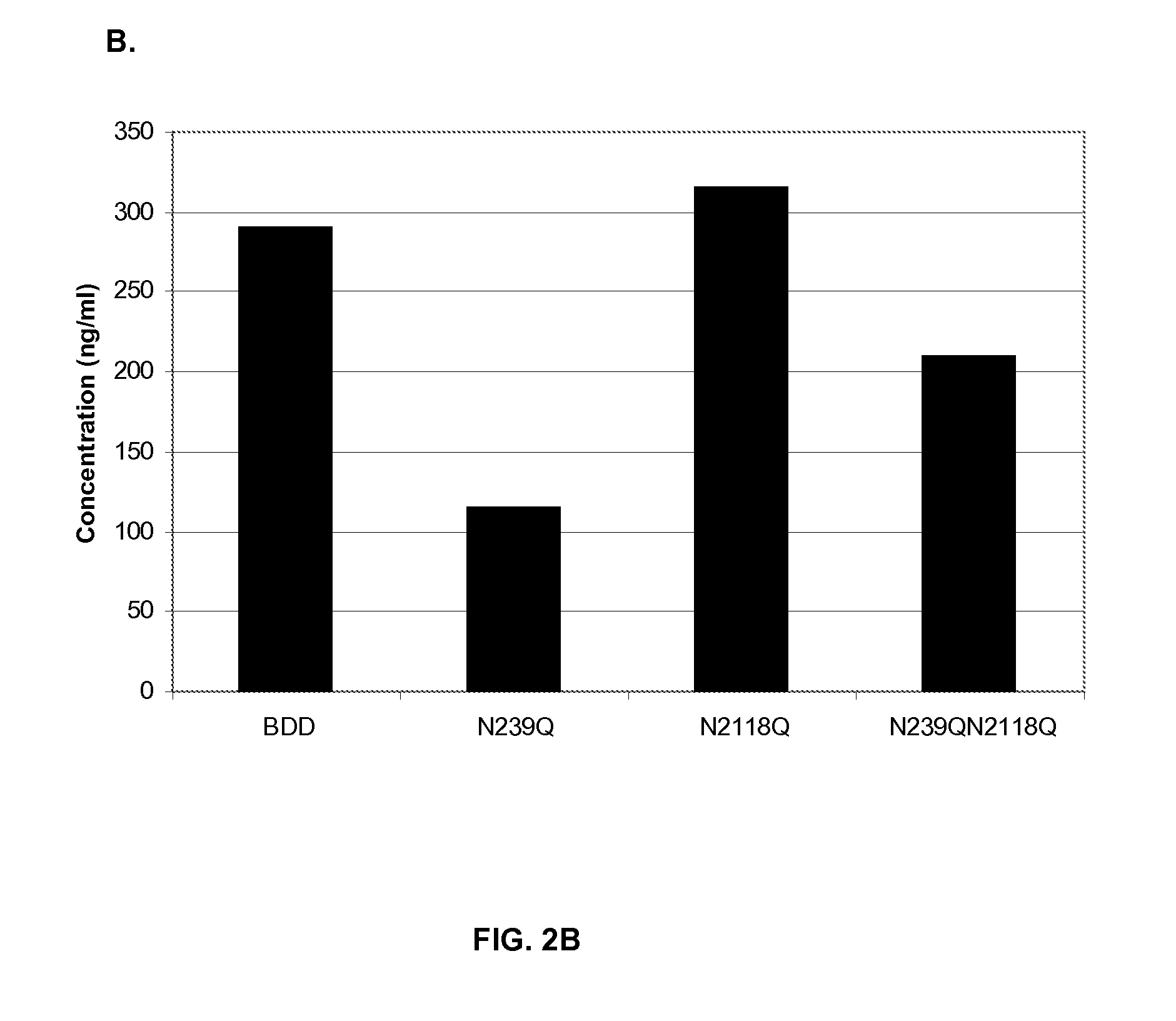Factor VIII Muteins with Reduced Immonugenicity
a technology of factor viii and mutein, which is applied in the direction of drug compositions, peptides, dna/rna fragmentation, etc., can solve the problems of massive organ failure or death, decreased efficacy, and unsatisfactory compliance burden and costs of higher-dosage treatment regimens
- Summary
- Abstract
- Description
- Claims
- Application Information
AI Technical Summary
Benefits of technology
Problems solved by technology
Method used
Image
Examples
example 1
Endocytosis of FVIII by Dendritic Cells
[0096]The effect of FVIII glycosylation on uptake by DCs in vitro was determined. Full-length rFVIII was first labeled for FACS analysis and then deglycosylated. For labeling of rFVIII for FACS analysis, 6 μg fluorescein isothiocyanate (FITC) in PBS (pH 9) was added to 100 μg deglycosylated FVIII and allowed to mix for 2 hours at 4° C. Unconjugated FITC was removed by dialysis using a 50K membrane in a solution of 20 mM HEPES, 150 mM NaCl, 2% sucrose, and 100 ppm Tween®-80 (polyethylene glycol sorbitan monooleate) at pH 7.5 for 2 hours at 4° C. FVIII concentration was quantified by Bradford assay and FVIII activity was determined by chromogenic assay. Labeled rFVIII was then enzymatically deglycosylated using endoglycosidase F1 (Endo-F1), which specifically cleaves N-linked oligosaccharides without denaturing the protein. rFVIII was incubated with Endo-F1 for 1 hour at 37° C. rFVIII was injected into a 50K membrane and dialyzed against a soluti...
example 2
Expression of FVIII Muteins in HKB11 Cells
[0098]A BDD FVIII and three muteins of this BDD FVIII were expressed in HKB11 cells. The BDD FVIII contained a deletion of all but 14 amino acids of the B-domain, such that the first 4 amino acids of the B-domain were linked to the 10 last residues of the B-domain. One BDD FVIII mutein contained a single substitution of glutamine for asparagine at position 239 (N239Q), another contained a single substitution of glutamine for asparagine at position 2118 (N2118Q) and the third contained both mutations (N239Q / N2118Q).
[0099]HKB11 cells were transiently transfected with BDD FVIII and BDD FVIII mutein expression plasmids using Lipofectamine™ 2000 (Invitrogen, Carlsbad, Calif.) according to the manufacturer's instructions. HKB11 cells were transiently transfected with BDD and BDD mutein plasmids, and supernatants from these cells were tested for FVIII activity by a chromogenic assay and for FVIII concentration by ELISA. The specific activity of the...
example 3
Reduced Uptake of FVIII Muteins by Dendritic Cells
[0100]Because uptake of FVIII by dendritic cells (DCs) is thought to be mediated by CD206 interaction with mannose-ending glycans on FVIII as described in Example 1, the capacity of DCs to take up the N239Q / N2118Q BDD mutein was tested. DCs were prepared as described above. DCs from two donors were pooled and then co-cultured with full-length rFVIII, BDD FVIII (described in Example 2), or the N239Q / N2118Q BDD mutein. Cells were co-cultured for 30 minutes in wells of a 96-well plate. The final volume per well was 100 μL and the final concentration of rFVIII, BDD, or mutein was 10 nM. The plate was then incubated for 30 minutes at 37° C. A parallel uptake assay was also performed at 4° C. as a control. Cells were pelleted by centrifugation of the plate at 300 g for 5 minutes at 4° C. Media were aspirated and cells were washed three times with ice-cold PBS / 10 mM EDTA / 0.01% Tween®-80. Cell pellets were then lysed by 25 μL per well of Cyt...
PUM
| Property | Measurement | Unit |
|---|---|---|
| Composition | aaaaa | aaaaa |
| Therapeutic | aaaaa | aaaaa |
Abstract
Description
Claims
Application Information
 Login to View More
Login to View More - R&D
- Intellectual Property
- Life Sciences
- Materials
- Tech Scout
- Unparalleled Data Quality
- Higher Quality Content
- 60% Fewer Hallucinations
Browse by: Latest US Patents, China's latest patents, Technical Efficacy Thesaurus, Application Domain, Technology Topic, Popular Technical Reports.
© 2025 PatSnap. All rights reserved.Legal|Privacy policy|Modern Slavery Act Transparency Statement|Sitemap|About US| Contact US: help@patsnap.com



